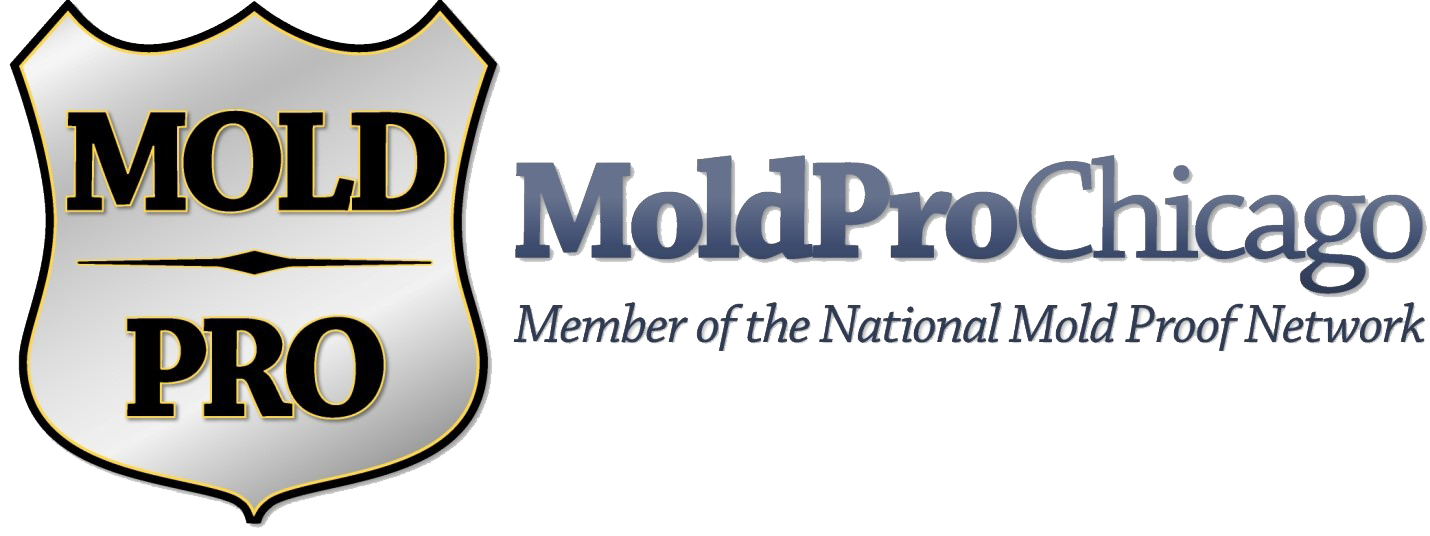Request Your Free Estimate
"*" indicates required fields
Request Your Free Estimate
"*" indicates required fields
Certified Mold Testing & Remediation in Chicago IL
What is Mold and why is it a problem?
Hello. I’m Joe from Mold Pro Chicago. Mold is fungus. Molds release spores, or reproductive seeds into the air. Spores can be problematic for our health, and when spores begin to colonize, they consume organic material like wood, drywall paper, and even dust. So, Mold can grow and spread just about anywhere. Mold spores cause allergic reactions, respiratory problems and other health issues. Mold adversely affects health and property value.
Isn’t mold everywhere?
Hello. I’m Joe from Mold Pro Chicago. Yeah, pretty much! Mold spores are always in the outdoor air, and there is mold in every building, every day. The important questions are…. How much mold, and what types of mold are you exposed to? Each person can tolerate only a certain amount, of certain types of mold, before the body begins to react. Other fun facts are that we have studied only 80,000 species of mold; and fungus makes up about 25% of our planet’s biomass.
What are common types of mold in our homes, schools and work places?
Hello. I’m Joe from Mold Pro Chicago. Stachybotrys and Chaetomium are commonly know as Black Molds. The mycotoxins in these molds adversely affect all of us when we breathe them or come in contact with them. They only grow indoors on substrates like drywall, cardboard and paper that have been saturated with water. Other common molds are Alternaria, Aspergillus, Cladosporium, Epicoccum, Fusarium, Penicillium and Ulocladium.
Is testing for mold a waste of time and money?
Hello. I’m Joe from Mold Pro Chicago. It depends on what your objective is. If an entire home or building is full of mold and you just want a remediation proposal, then testing is not necessary. If people are getting allergies and respiratory problems when in a space, but no visible mold can be found, air testing can be just what you need. We want to determine how much mold and what kinds of mold are in the air, and compare the level and types with those of the outdoor air at the same time. The question is whether there is an indoor SOURCE of the mold?
What does mold testing tell us?
Hello. I’m Joe from Mold Pro Chicago. Surface sampling and air samples tell us if there is Acceptable Fungal Ecology, or Unacceptable Fungal Ecology. There are only a few places on earth that are constantly mold-free. So, there is mold in your home and in every other building you enter, all the time. Don’t ever trust a mold company that tells you that they create a mold-free environment. Just about everywhere in creation, even God didn’t do that! A good surface sample result is one that detects no fungi on a small area of building surface. A good air sample result is one that detects less mold indoor of each type, than what is found outdoor on the same day.
What can you expect to pay for mold testing?
Hello. I’m Joe from Mold Pro Chicago. You should not pay more than $150 per sample for mold, whether testing for mold on surfaces, or in the air. When testing the air, keep in mind that you will need to pay for one outdoor air sample, which is often called the Control or Baseline Sample. Surface samples are direct and taken from a small area. Air samples also have a limited range of representation, such as a few hundred square feet. There may be an additional cost for a visual inspection. The results from the testing and inspection may result in a need for mold remediation.
What is mold remediation?
Hello. I’m Joe from Mold Pro Chicago. Remediation is simply the process of providing a remedy for a space known to have Unacceptable Fungal Ecology. In remediation, we kill fungus, we often remove surfaces that have mold on them, we filter the air, and we prevent future mold colonization. Mold remediation is only effective if the conducive conditions that allowed the original mold colonization to take place, are eliminated or mitigated. The objective for mold remediation is not to establish a temporary mold-free environment, but it is always to achieve Acceptable Fungal Ecology.
What are common steps for effective mold remediation?
Hello. I’m Joe from Mold Pro Chicago. Containment of the work area, HEPA air scrubbing, misting moldy surfaces, and HEPA vacuuming help prevent cross-contamination during a mold remediation project. Removal and disposal of moldy surfaces, along with abrasive removal of dead spores from surfaces such as framing in cavities is also necessary. Encapsulating cleaned and disinfected surfaces, with EPA registered anti-microbial, is a great way to establish a barrier to prevent mold growth and colonization in the future. It is also helpful to clean and sanitize HVAC ducts immediately after mold remediation.
Isn’t mold remediation very expensive?
Hello. I’m Joe from Mold Pro Chicago. Mold remediation is never in the annual budget for a family or a business. It is always an unwelcome surprise. It is important that the mold professional company you choose is sympathetic to that fact. Health and property value are extremely important, therefore, mold remediation should always improve lives. Attic, crawl space and unfinished basement mold remediation should range between $2 and $4 per square foot on most projects. Mold remediation in finished basements and living areas have too many variables on which to place a cost per square foot.
Why isn’t spot-treatment ever a good idea for attics and crawl spaces?
Hello. I’m Joe from Mold Pro Chicago. Remember, fungus spreads by releasing mold spores. These microscopic reproductive seeds circulate and rest on surfaces, and then get lifted back up into the air. It is irresponsible to only treat the areas in attics and crawls where there is visible mold growth. There are unseen spores that need to be killed and removed. While it is not necessary to remove fiberglass insulation, it is always necessary to treat all exposed wood. Wood, is a food source for mold. Fiberglass is not.
Shouldn’t a mold company be certified?
Hello. I’m Joe from Mold Pro Chicago. Yes. While some states do not require licensing, every mold professional company should be nationally certified. The best association to certify mold professionals and companies, is the IICRC. The Institute of Inspection Cleaning and Restoration Certification literally wrote the book on the mold protocol. It is also necessary for every mold remediation company to be certified by the United States Environmental Protection Agency as a firm trained in the RRP led-safe standards. It is presumed that led is in every building built before 1978.
Isn’t there a conflict of interest to test for mold, and also provide mold remediation
Hello. I’m Joe from Mold Pro Chicago. It should not be presumed that a company that tests for mold will upsell remediation. Many reviews for Mold Pro Chicago are written by people that were so pleased that mold test results indicated Acceptable Fungal Ecology, and that no remediation was justified. A conflict of interest is only an issue for companies with dishonest owners and employees. Ethical standards should be listed on a company’s website, and exhibited on each appointment. The Golden Rule is always the best standard.
What are important things to look for?
Hello. I’m Joe from Mold Pro Chicago. A testing or remediation proposal should always have line items with costs per item, or square footage of areas being treated. Product names should be listed on proposals. Companies must be insured with General Liability and Workers’ Compensation. There should be a ten year Guarantee that mold will not consume the surfaces being treated, as long as the conducive conditions have been corrected. It is always a good practice to look at online reviews and ratings with the Better Business Bureau.

